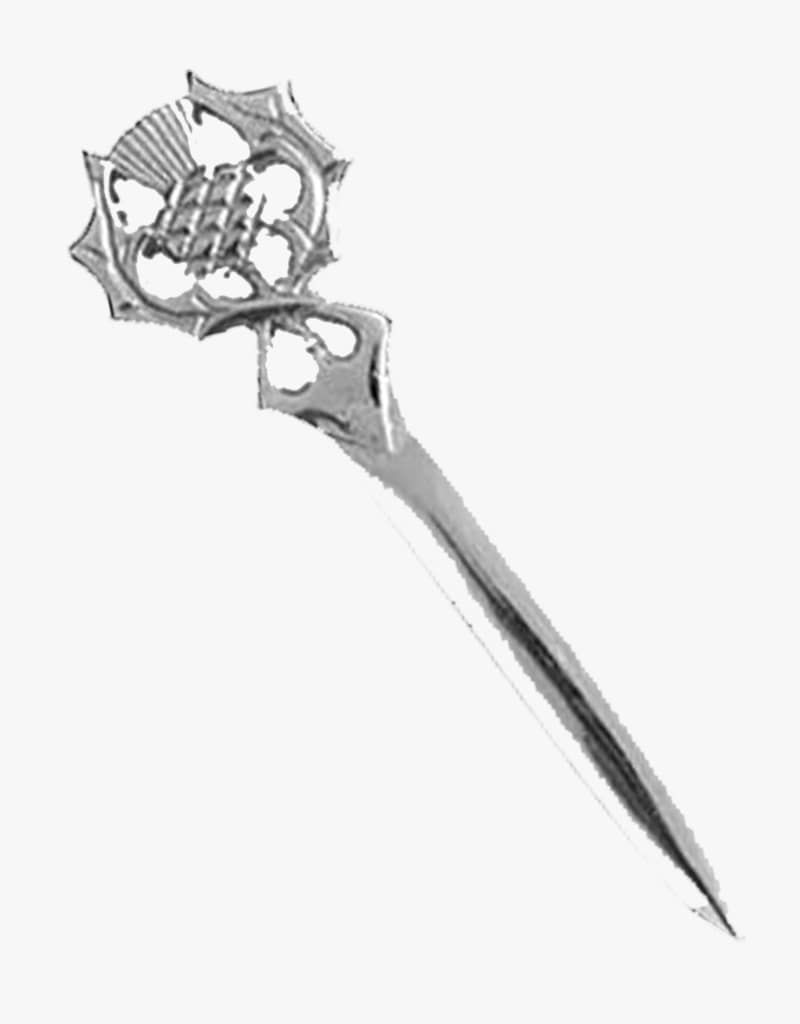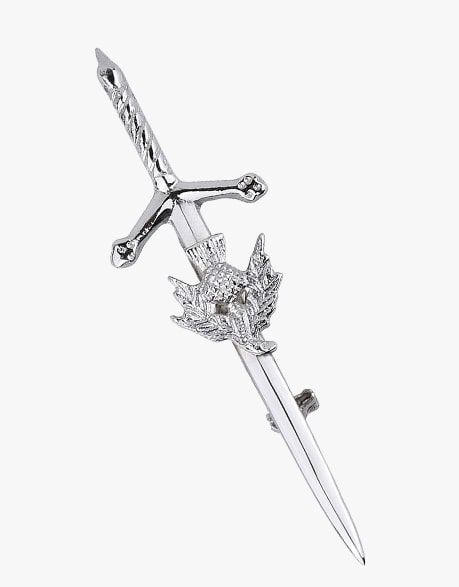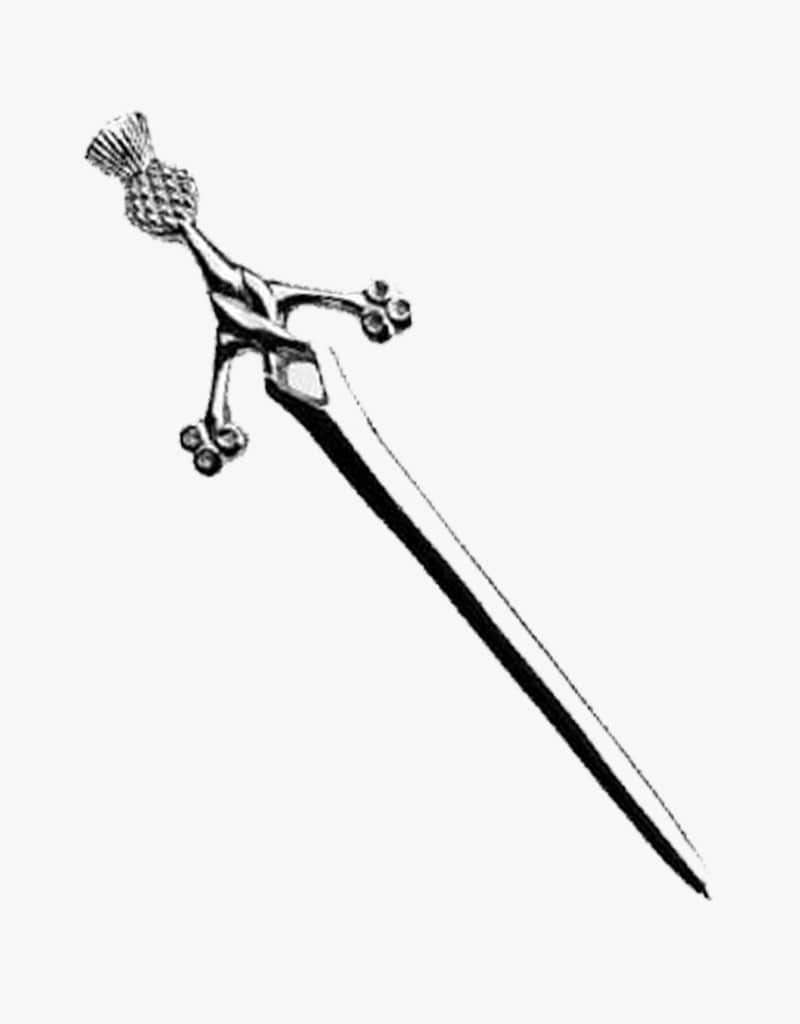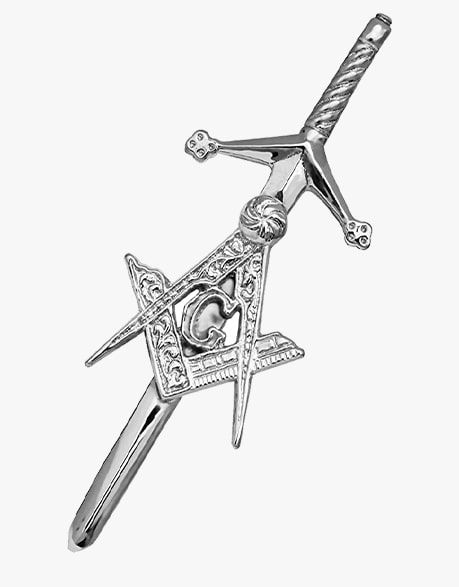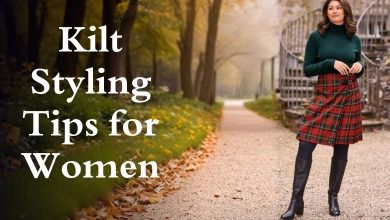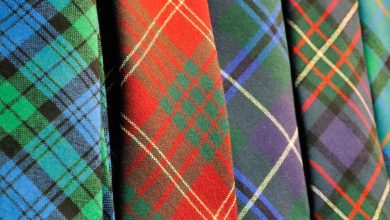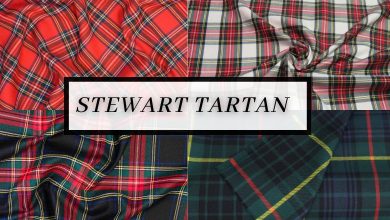Various Styles and Materials of Kilt Pins for Highland Dress
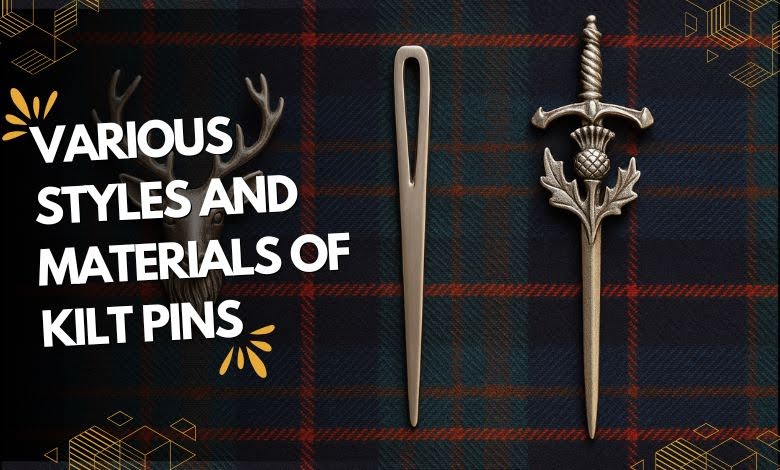
A kilt pin is a small detail of the Highland dress but it has a significant impact on the outfit. Regardless of its design and material, it acts as a fashionable flair and also holds the kilt’s front apron, keeping it in place. Once this piece used to have a few styles, but the fashion statement today helps you attach its amusing designs, trendy styles, and classic forms. In the same manner, the materials of kilt pins range from basic to precious metals, impacting their value. So, this discussion explains several kinds of kilt pins, their materials, and ways to match and maintain them properly.
Table of Contents
ToggleStyles of Kilt Pins
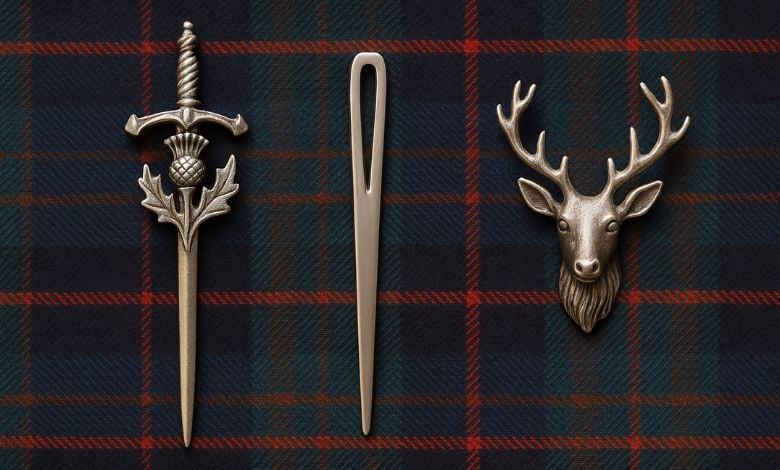
Kilt pins have several designs, including traditional, modern, and thematic, for accommodating a wide range of tastes for every occasion. All of them have unique appearances and suitability for different settings.
Traditional Styles
Traditional kilt pins are the conventional ones, including cultural Scottish emblems such as clan crests, thistles, or swords. Conventional materials used in making these pins are pewter or silver as the primary. These pins are appropriate choices for ceremonial events or weddings for traditional and practical touch. Those with a deep interest in history or Scottish culture prioritise wearing this timeless pin style.
Modern Styles
If we talk about the modern kilt pins, they usually have cleaner, stylish looks according to the requirements of today’s fashion. One can find them with abstract shapes or minimalist metal pieces. As the name represents, these pins suit modern wearers or those who want their traditional Highland dress to look a bit modern. Preferred materials to make contemporary pins are stainless steel or brushed metal.
Themed or Novelty Styles
Novelty or themed kilt pins are exciting additions to your kilt outfit. They truly match your style and come with favourite designs or logos, such as animals, sports, and even pastimes memories. Above all, they allow you to express identity and nature as well. Customised or modern aesthetics announce them to be suitable for informal gatherings only.
Materials Used in Kilt Pins
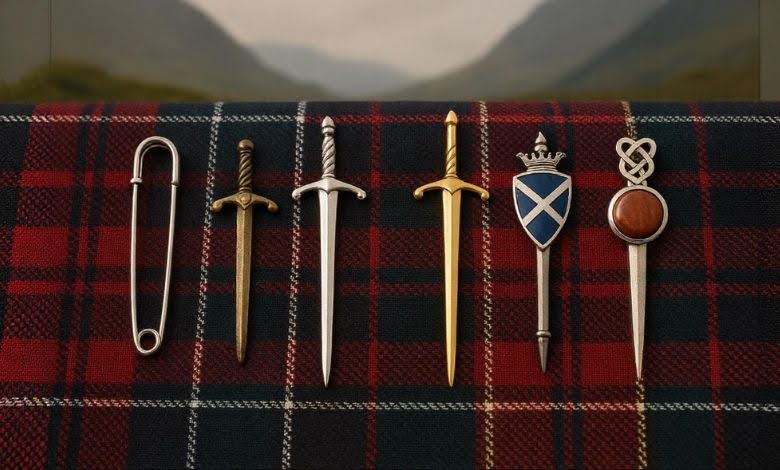
Styles of the kilt pins must be clear now, and here comes the time to discuss kilt pin materials. Similar to all kilt accessories, the medium kilt pin impacts the overall look of the attire. So, it is important to learn about this point prior to buying one.
Common Metals
Some popular examples of common metals are brass, pewter, and stainless steel. Their easy availability with affordability brings them to the list of common metals. Besides being affordable, they have long-lasting features and are easy to shape. Pins made with these substances are used in both professional and informal settings.
Precious Metals
Let’s talk about the precious pin-making materials that are gold and silver. These substances cost too much, which is why they have less demand compared to the common metals. But the pins made with these metals, undoubtedly, heighten the overall appearance of the attire. Those who love to show off themselves usually prefer such pins. Everyone cannot afford these substances. That’s why some people used plated gold to add attraction to their outfit.
Mixed Materials and Accents
Kilt pins are also made with a blend of different materials, such as metal and enamel, jewels, or wood. Such pins are recommended for both formal and informal settings, offering personality and visual attraction. They magnify the kilt’s fabric, the colours of the tartan, or the subject of the occasion, and the wearers display uniqueness.
Matching Your Kilt Pin to the Occasion
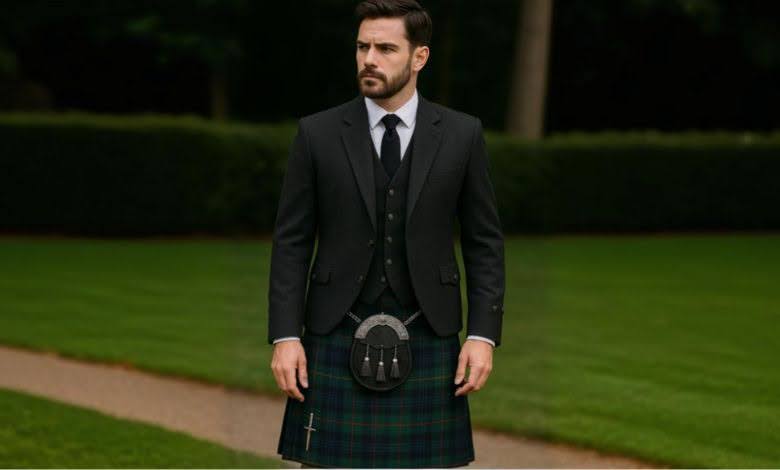
After knowing the styles and materials of the kilt pin, you also must know how to match a pin with your outfit. Doing so is not challenging at all, while a bit of adherence can be pretty helpful for you.
Coordinating with Other Accessories: The first thing is to analyse the event’s theme and coordinate a pin accordingly. If you are wearing it with a tartan kilt, choose one with a traditional style. Similarly, match it with the remaining attachments, including shoes, sporrans, and brooches.
Personal and Clan Symbolism: Another consideration that you must focus on is deciding whether you prefer a personal style or a clan symbol. Ancestral emblems are suitable for clan gatherings or Highland games, while personal styles perform well in casual events.
Size and Weight Considerations: Last thing that needs your attention is choosing the accurate size and weight of the accessory. For modern kilts like leather or denim kilts that also own considerable heavy metal, they might be suitable. Therefore, the size of a kilt pin relies on your body shape and height.
Caring for Your Kilt Pin According to Material
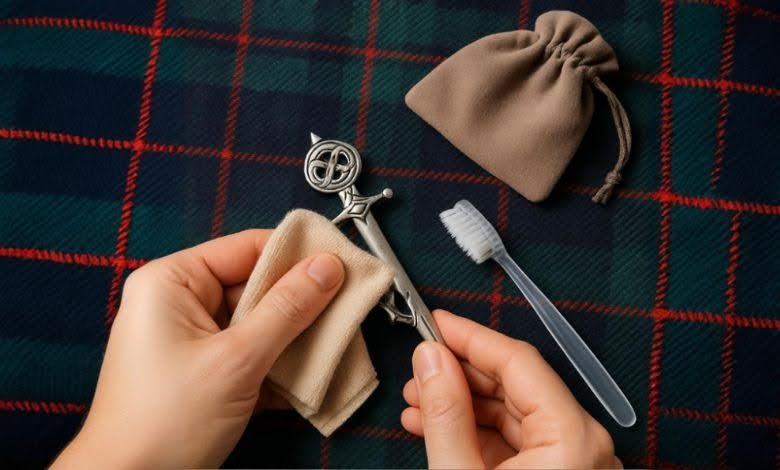
Do you know that caring tips for metals significantly differ from those for fabrics like tartan, denim, and leather? People are seen caring for kilts and other fabric parts because they find them the most exposed parts. Meanwhile, they avoid metal products and specifically the pins and brooches. You should not make such a mistake but keep them shiny and clean following the given tips.
- Start cleaning by carefully removing dust or surface filth from the kilt pin with a wiped cloth.
- Pins can get tarnished or dirty with time. Remove them using a moistened towel with warm water and mild soap.
- Applying harsh or abrasive chemicals fades the colour of the kilt and can even cause scratches. So, use relevant and soft chemicals.
- Use a soft-bristled toothbrush to clean difficult-to-reach points of intricate or engraved pins.
- Ensure proper storage to maintain the shape of a kilt pin by placing it somewhere cool and dry, ideally in a soft bag.
Looking for Premium Pins? Approach Utility Kilt UK!
Though it is a small entity, a kilt pin serves as one of the most important parts of the attire. If you do not prefer a low-quality kilt, consider doing the same for a kilt pin. Thanks for trusting Utility Kilt UK and being our kilt customers. We would like to add here that our inventory contains every kilt accessory, including kilt pins. Like kilts, our Scottish kilt pins are exceptional and affordable. Visit our store today to choose and buy the right kilt pin. Some of our extraordinary kilt pins are given as follows.
Kilt Pins and Frequently Asked Questions About Them
Are kilt pins exclusive to formal kilts only?
No, kilt pins are also suitable to pair with utility or casual kilts. Undoubtedly, their association with traditional kilts is more common; their use in contemporary kilts is a part of the fashion statement.
Do women wear kilt pins, and if so, are there any design differences?
Indeed, kilt pins also serve as an important entity for women’s kilts. However, their designs are different from those that men use. Most of the time, pins for women are engraved with emblems of feminine styles.
What’s the proper placement of a kilt pin on the kilt?
Traditionally, a kilt pin is worn on the front apron’s lower corner, 1.5–2 inches in from the side and 2–4 inches from the bottom border. Remember, men and women do not attach a kilt pin at the same side. Ladies traditionally wear kilt pins on the left side of the kilt, while the males’ side is the right.
What should be the ideal weight of a pin, so it may not damage the kilt?
The weight of a kilt pin must be sufficient to prevent the apron from flapping. Its weight depends on the type of kilt. Leather is a heavy material and needs something heavier, while traditional kilts are lightweight comparatively. The standard weight of a pin ranges from 25-100 grams.
